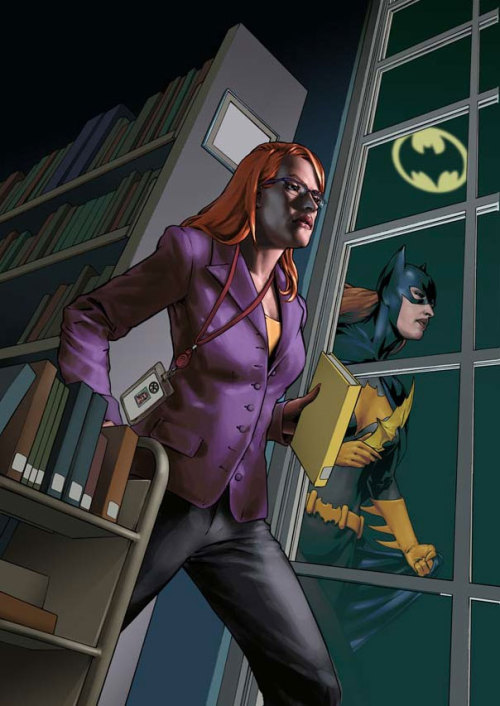 Not so very long ago, comic books in libraries were exceedingly rare. Even those libraries that did carry comics often relegated them to the children’s department, with little attention given to building a diverse, quality collection. But over the past 20 years or so, patron demand for manga and the critical success of graphic novels such as Maus and Persepolis have brought about a dramatic transformation in the way the entire medium — including more traditional comics — are treated in libraries. In a recent article for Publishers Weekly, Heidi MacDonald examines how this change happened, as well as future opportunities and challenges for library comic collections.
Not so very long ago, comic books in libraries were exceedingly rare. Even those libraries that did carry comics often relegated them to the children’s department, with little attention given to building a diverse, quality collection. But over the past 20 years or so, patron demand for manga and the critical success of graphic novels such as Maus and Persepolis have brought about a dramatic transformation in the way the entire medium — including more traditional comics — are treated in libraries. In a recent article for Publishers Weekly, Heidi MacDonald examines how this change happened, as well as future opportunities and challenges for library comic collections.
MacDonald interviewed public, school, and academic librarians, finding that comics have made the most inroads in public libraries. Much of the institutional attitude shift can be attributed to a younger generation of librarians like Robin Brenner of Brookline (Massachusetts) Public Library, who founded the review blog noflyingnotights.com, and Christian Zabriskie of Queens (New York) Library. In 2011, Zabriskie compared statistics for popular books like the Harry Potter series and GED guides (a notoriously high-circulation library item) to a random sample of comics from his library’s collection, and found that the comics not only circulated at a higher rate, but were also more cost-efficient. In the face of of such figures, any pockets of comics-resistance that may still exist in the upper echelons of public library administrations are fast disappearing.
Progress has been a bit slower in school libraries, however. Although their young patrons embrace comics with enthusiasm — school media specialist Esther Keller of Brooklyn’s JHS 278 notes that the format makes up “3% of the collection and 30% of our circulation” — school librarians who try to expand their collections often find themselves up against administrators, boards, and parents who still think of comics as literary junk food with no redeeming value. But this, too, is changing, says University of Illinois assistant professor of Library and Information Science (and CBLDF guest blogger) Carol Tilley. With the ongoing implementation of the Common Core standards in most states, students will be expected to read and interpret texts in a variety of formats — a great opportunity for comics to gain ground in school libraries. Librarians who previously had difficulty choosing which comics to buy for their collections are also able to take advantage of resources like Brenner’s blog and the annual list of Great Graphic Novels for Teens issued by the Young Adult Library Services Association.
There are still some problems to be worked out in the library-comics nexus, however. For one thing, some comics publishers don’t have the sort of established library liaison programs that the big publishing houses do, and librarians are sometimes at a loss as to whom they should contact for acquisitions and other issues. This lack may be due in part to the challenges that comics in library collections do tend to face from some members of the public, notes MacDonald:
Some publishers think that libraries are still prejudiced against comics; or that comics are subject to removal because of frequent book challenges. Although challenges are a fact of life—in recent years books by figures as revered as [Alan] Moore and [Alison] Bechdel have been challenged—librarians have been specifically trained to deal with them, says Coleman. In fact ALA’s Office of Intellectual Freedom has been teaming up with the Comic Book Legal Defense Fund to educate the public on dealing with censorship issues in libraries.
Another issue that libraries have encountered in recent years is the growing popularity of digital comics platforms like comiXology, which mostly do not offer institutional subscriptions that would allow libraries to virtually lend comics. But that also looks to be changing, as a library edition of Comics + will launch this summer and may draw other purveyors of digital comics into the library market. So, if you’ve never thought of the library as a place to get your comics fix, take another look because you may be surprised! There’s lots more detail on the past, present, and future of comics in libraries to be found in MacDonald’s article here.
Please help support CBLDF’s important First Amendment work and reporting on issues such as this by making a donation or becoming a member of the CBLDF!
Maren Williams is a reference librarian who enjoys free speech and rescue dogs.